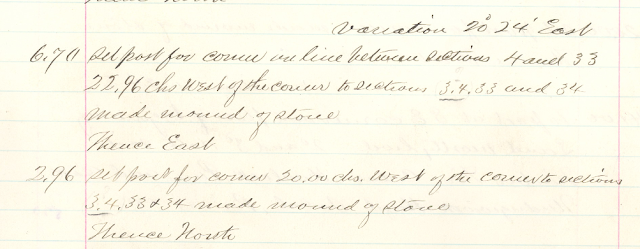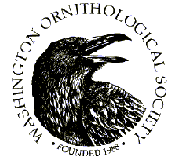Thursday, August 15, 2013
Gardners Beware - Bee Friendly Plants & Veggie Starts
Growing organic, pesticide FREE veggies, plants and flowers has just became more difficult. The Olympia Bee Keepers Association has been a wealth of information with regards to the health of local bees and honey production. King 5 aired a segment this week concerning 'Bee Friendly' plants sold by major retailers that STILL contain pesticides.
ISSUE: How do you find veggie, plant, and flower seeds that have NOT been pre-treated?
ISSUE: How do you find veggie, plant, and flower seeds that have NOT been pre-treated?
Sunday, June 30, 2013
Heat warning!
Please don't forget your animals in the heat! A good way to make sure your pets are hydrated is to freeze a 2 liter bottle of water, after its frozen cut the bottle off and toss the ice into their water dishes. you can also freeze a large tub full of treats for them to find when the ice melts. With the weather we are having right now? The ice won't last long!
Saturday, May 4, 2013
Sunday, April 14, 2013
Prairie Yellow Jacket - Vespula atropilosa
 |
| Vespula atropilosa - Prairie Yellow Jacket |
I admit this is a very poor photograph, but, all in all it was a nice to find in my yard. It means things are warming up enough and Spring has arrived!
This is the first Prairie Yellow Jacket in Thurston County at BugGuide!
There are five other states in the USA and one in Alberta, Canada who have spotted this little guy.
View and submit photos of your Yelm Backyard bugs here: http://bugguide.net/node/view/15740
The Prairie Yellow Jacket has a tendency to burrow nests underground. Generally, you can find this type of Yellow Jacket in the open prairie and similar open habitats.
"V. atropilosa workers are predators only on live prey.
They often attack spiders, phalangids, flies, caterpillars, hemipterans,
and some homopterans, but seldom attack other Hymenoptera or beetles." -- Discover Life
More on this backyard bug can be read here:
Saturday, March 30, 2013
Friday, February 22, 2013
Yellem Prairie Survey 1856 -1858
 In comparing an old 1800's map of the Yellem Prairie and Google maps from today, you can see a few differences - especially the differences in the tree lines. The tree lines depicted in the old map below (1856 ) show two distinct tree lines outside of the area labeled Yellem Prairie both North and South. It is noted with the green color and curved lines. The Google map indicates only a remnant of that tree line left today. If you use a little imagination, you can see the top blue marker in the Google map, where a tree line is also noted in the 1856 map below. It may true that remnants of that tree line exist to this day.
In comparing an old 1800's map of the Yellem Prairie and Google maps from today, you can see a few differences - especially the differences in the tree lines. The tree lines depicted in the old map below (1856 ) show two distinct tree lines outside of the area labeled Yellem Prairie both North and South. It is noted with the green color and curved lines. The Google map indicates only a remnant of that tree line left today. If you use a little imagination, you can see the top blue marker in the Google map, where a tree line is also noted in the 1856 map below. It may true that remnants of that tree line exist to this day.  |
| http://www.blm.gov/or/landrecords/survey/yPlatView1_2.php?path=PWA&name=t170n020e_001.jpg |
 |
| Survey Notes 1858 Berry |
You may think that a mound of rocks is just an uninteresting heap of stone, but in the early times of Washington statehood and even prior to Thurston County's official naming, mounds of rocks were used to mark locations for travelers, linemen, axeman and surveyors.
Transcription from Survey Notes by Berry 1858.
"Variation 20* 24' East
6.70 Set post for corner on line between sections 4 and 33
22.96 chs (cks) West of the corner to sections 3.4.33 and 34
made mound of stone.
Thence East
2.96 Set post for corner 20.00 chs. (cks.) West of the corner to sections
3.4.33 and 24 made mound of stone
Thence North"
Survey notes of the Yellem Prairie 1856-58 also included information about oaks or large trees which were used to identify locations or map positions in the Yellem Prairie. When oaks or other large trees were not found nearby, a cedar post was installed with a mound of rocks. Installing the cedar post with a rock mound was required of the surveyor. There were no specific reasons given for the surveyor to do so, it was simply stated "installed as instructed."
Washington state recognizes a few properties on Railway Rd. in their Historical Property Survey. One or two such properties exist near the rock mounds. It is possible that these mounds of rock have been sitting there quietly, untouched for nearly 155 years. There are two such mounds that can be seen on Railway Rd. in Yelm. One just across from the other and are noted in the Google map along with the property from the state survey.
 |
| Location Approximations of Survey Posts with Stone Mounds |
The Yelm History Project discusses the many rock piles, mounds, and walls built by early settlers to the Yelm Prairie. Rock mounds provide cover for wildlife like snakes, frogs, raccoons, rabbits, skunks and insects. Read more about landscaping for wildlife from Washington State Department of Fish and Wildlife.
Subscribe to:
Posts (Atom)
 |
| ||||||||||||||||||||||||









